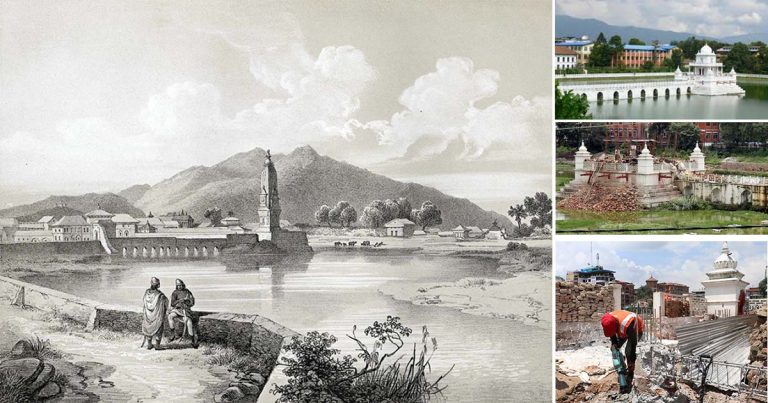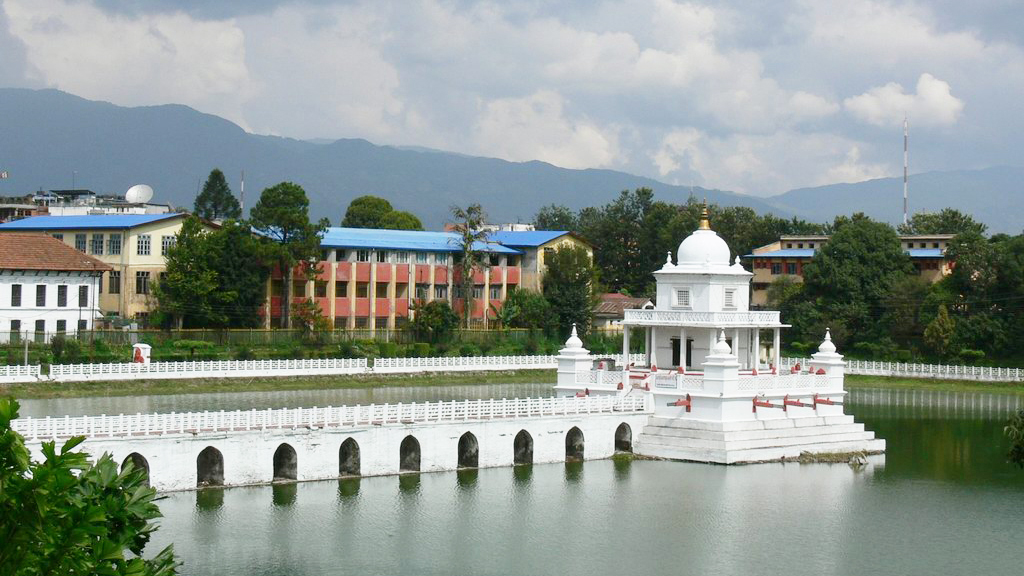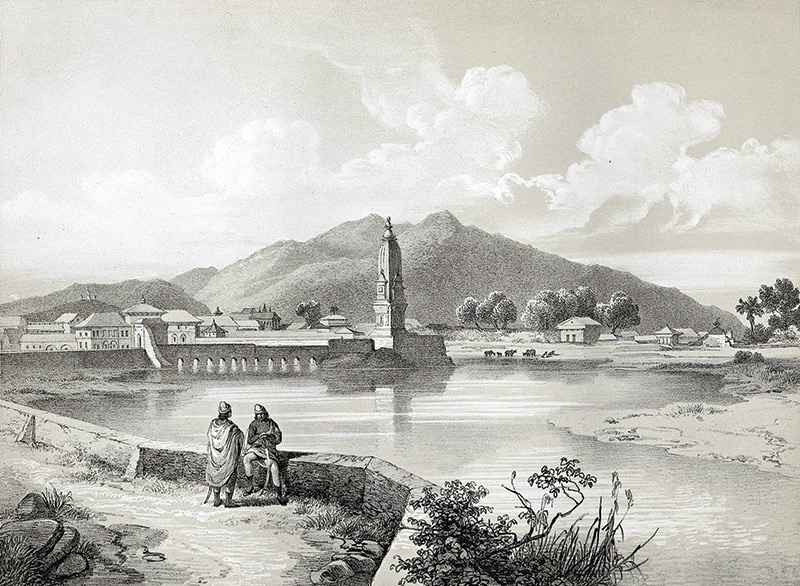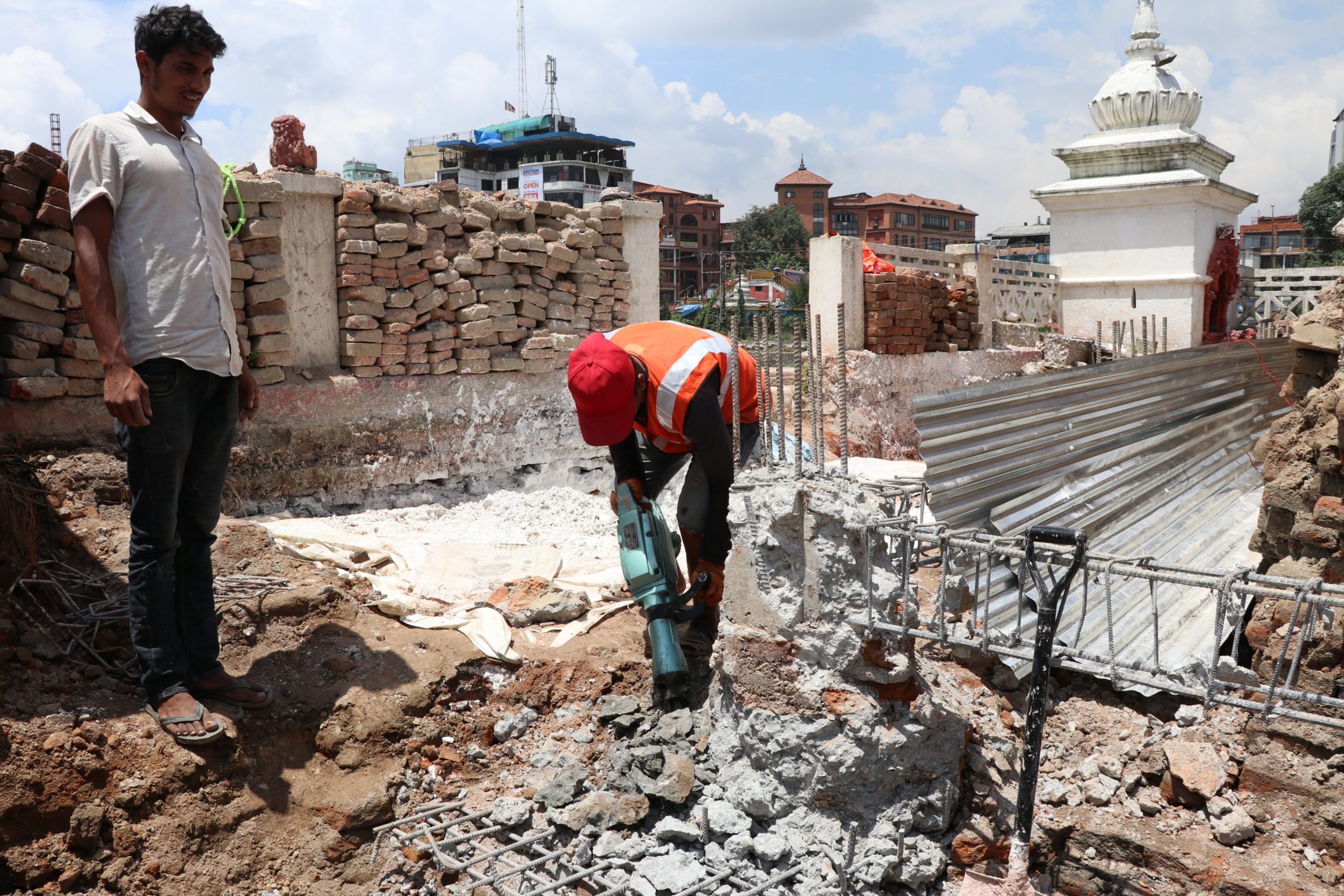
For most of us Nepalis the image below has been the face of Bal Gopaleshwor Temple inside Rani Pokhari.

The white washed structure was the key highlight of the pond, and would often inspire awe as we passed by Jamal area. The same temple where our men would queue on Bhai Tika to receive ‘tika’ from our beloved queen(s) – for those living away from the valley, we could watch the entire episode on national TV.
But what if we told you today that this wasn’t how the temple used to look?
Yes, that’s right, the people who lived before and during the great earthquake of 1932, the temple used to look different. Much like the one as painted below.

Just like the April, 2015 earthquake, in 1934 Nepal had been jostled pretty bad – houses and monuments were torn and so was Rani Pokhari. At the time, the Ranas ruled – they rebuilt the city, but as per their whim. Instead of the original Shikhara style temple, the Bal Gopaleshwor Temple was reconstructed in the Rana style.
Thus we grew up, assuming the temple had always been like that.
In April, 2015 another earthquake jostled the nation – the temple once again fell. When time came to resurrect the temple, Kathmandu Metropolitan City started reconstructing the temple in a modern way, however, historical conservationists won.
After a huge tussle, KMC, the originally assigned re-constructors handed the project over to the National Reconstruction Authority (NRA). The NRA in consultation with the Department of Archaeology said the temple would be reconstructed in the original Shikhara style – even using the traditional raw materials as done during the Malla-era.
While the restoration of the pond is ongoing in the ancient style of pond making, the already built structure of the temple using concrete and rods is being torn down. The temple will be restored in its original grandeur.

They have said will complete the project around Tihar, if they do so, the temple will have become restored in its original form, as it was commissioned by King Pratap Malla in the 17th century.





